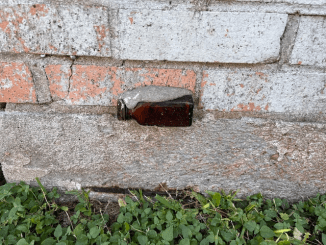Have you ever come across a strange, rubbery material in a dentist’s office and wondered what it was? If you don’t recognize this, then congratulations—you’re one of the lucky ones!
This mysterious-looking substance is dental impression rubber, a material widely used in dentistry to take impressions of teeth and gums. If you’ve ever had braces, dentures, crowns, or any major dental work, chances are you’ve had the “pleasure” of experiencing this firsthand. But for those who haven’t, let’s explore what it is, how it works, and why so many people find it uncomfortable and unpleasant.
What Is Dental Impression Rubber?

Dental impression rubber, also known as dental putty or impression material, is a thick, rubbery substance used by dentists to create an exact mold of a patient’s teeth and gums. This mold is then used to design crowns, bridges, dentures, retainers, and other dental appliances.
Key Features of Dental Impression Rubber:
- It starts as a soft, pliable material but quickly hardens into a rubbery mold.
- It is usually made from silicone, polyether, or alginate compounds.
- It captures even the tiniest details of the teeth and gum structure.
- It often has a strong, strange taste that many patients dislike.
So, if you haven’t experienced the unpleasantness of having this rubber in your mouth for several minutes, you can count yourself lucky!
Why Dentists Use Dental Impression Rubber
Dental professionals rely on this material to ensure precision in treatments. A detailed impression is necessary for making custom-fitted dental appliances that match the patient’s bite perfectly.
Common Uses of Dental Impression Material:
- Creating Crowns and Bridges – To ensure a perfect fit, dentists take impressions of the damaged tooth and surrounding areas.
- Orthodontics (Braces & Retainers) – Before getting braces, impressions help map out the exact shape of the teeth.
- Dentures and Implants – Custom dentures or implants require highly accurate molds to ensure proper fit and comfort.
- Bite Analysis – Dentists use impressions to assess bite alignment and diagnose TMJ or jaw issues.
This process is essential for dental work, but for patients, it’s often far from enjoyable.
The Unpleasant Experience of Dental Impressions
While the process isn’t painful, it is one of the most uncomfortable experiences for many people. If you’ve never had it done, here’s what you’re missing:
1. The Gag Reflex Nightmare
One of the biggest complaints about dental impressions is that the rubbery material triggers the gag reflex. The dentist places a tray filled with gooey material in your mouth, often pressing it against your upper teeth and palate. If you have a sensitive gag reflex, this part can be absolute torture.
2. The Awful Taste and Smell
Most dental impression materials have a strong, chemical-like taste and smell. Some patients describe it as chalky, minty, or just plain gross. Even though modern formulations are improving, many people still struggle to tolerate the taste.
3. The Feeling of Suffocation
Since the tray is pressed deep against the roof of your mouth, some patients feel like they can’t breathe properly. This can cause mild panic or discomfort, especially for those with anxiety about dental procedures.

4. The Mess and Residue
Once the rubber hardens, the dentist removes the tray—but not without leaving bits of material stuck on your teeth and gums. You’ll probably need a good rinse (or two) before the feeling goes away completely.
Modern Alternatives to Traditional Dental Impressions
Luckily, dentistry has advanced, and newer digital alternatives are becoming more common. These modern methods eliminate the need for messy rubber molds.
1. Digital Scanners (3D Imaging)
Many dentists now use intraoral scanners, which capture a 3D digital image of your teeth instead of taking a physical impression. This method is:
- More comfortable (no gagging or bad taste).
- Faster (the process takes seconds, not minutes).
- More accurate (reduces errors caused by impression distortions).
2. Soft Silicone Impressions
For cases where traditional impressions are still needed, newer silicone materials are more comfortable and less messy than older rubber compounds.
Why Some People Are “Lucky” to Have Never Experienced It

If you’ve never had a crown, bridge, denture, or orthodontic treatment, you’ve likely never needed a dental impression—and that makes you lucky!
Here’s why:
- You’ve never had to endure the gag reflex struggle.
- You’ve never tasted the awful, rubbery material.
- You’ve never had to sit through the longest two minutes of your life while trying not to panic.
- You’ve never had to scrape off leftover rubber bits from your teeth after the procedure.
For those who have gone through it, it’s a rite of passage—a minor but memorable inconvenience in the world of dentistry.
Conclusion: A Necessary but Unpleasant Experience
Dental impression rubber is one of those things you don’t appreciate until you need it. It’s an essential tool for dentists, ensuring precise treatments and well-fitted dental appliances. However, for patients, the experience is often messy, uncomfortable, and gag-inducing.
If you don’t know what this is, consider yourself one of the lucky ones! But if you ever find yourself needing major dental work, be prepared—you might just get an unwelcome introduction to dental impression rubber.


